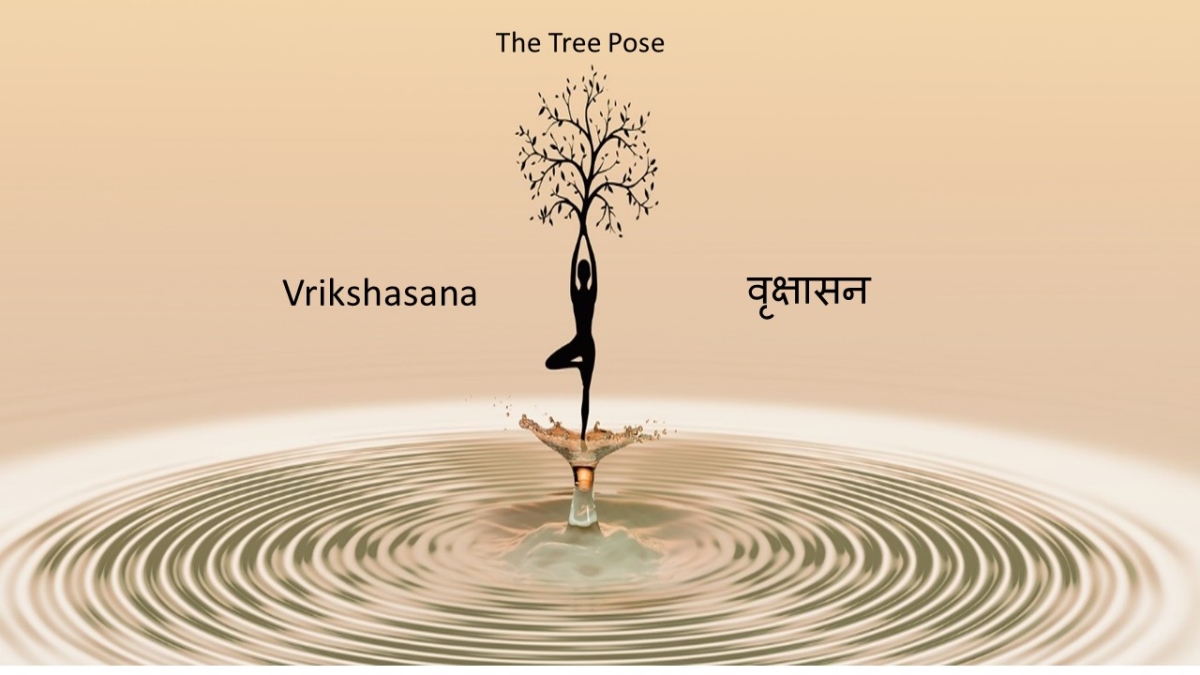Vrikshasana, also spelled as Vrukshasana, is one of the standing yoga postures. It is a basic-level Yoga Pose. Moreover, Sages in Hinduism performed this posture as a tool of austerity or Tapasya.
Though we could find the first mention of the posture only in Gheranda Samhita of the seventieth century, there are other pieces of evidence for the fact that it has been in practice since ancient times. An ancient rock temple at Mamallapuram that belongs to the Seventh Century CE shows a man performing a posture similar to Vriksasana. Hence it is evident that this posture is one of the ancient yoga poses.
Vrikshasana Information
| Pose Name | Vrikshasana |
| Sanskrit Name | वृक्षासन |
| IAST | vṛkṣāsana |
| English Name | Tree Pose |
| Origin | Ancient Indian |
| Level | Basic |
| Type | Leg Balance |
Vrikshasana Meaning
Vriksasana is the combination of two Sanskrit words: Vriksha and Asana. Vriksha means tree and Asana means posture. Therefore we call this pose Tree Pose in English.
Vriksasana Practice Procedure
Safety and Precautions
The performance of this posture involves leg balance. Those new to the practice, especially the elderly people, should be taken care of. Performing the posture near a corner where two walls meet is safe. In case of losing balance, they could reach for the wall and avoid falling to the ground.
Preparatory Poses
This one is easier to master. Therefore it requires no preparatory pose. However, performing Tadasana will make this pose easier to master.
Vrikshasana Steps
The steps of Vrukshasana are as follows.
Step 1
Stand erect. Keep a distance of one foot between the legs.
Step 2
Raise your arms keeping the palms closer in Anjali Mudra. The inner sides of the upper arms should touch the ears. Keep your eyesight on any object in front of you.
Step 3
Raise the right leg up and place it on the left thigh similar to the leg position in Ardha Padmasana.
Step 4
Breathe normally. Keep the position as long as it is comfortable.
Step 5
Finally, release the right leg down. Similarly, repeat the above steps with the left leg.
Duration
Initially, it is not possible to keep the position for more than a couple of minutes. For the purpose of meditation, one can extend the duration up to three hours. As a strict practice of austerity, it can be increased for a longer duration, even for months.
Vrikshasana Benefits
- By Tree Pose as a practice of Tapasya, it is possible to get psychic powers like clairvoyance, clairaudience, and the like.
- As a practice of meditation, one can control his mind and achieve control over sense organs. It helps to maintain Celibacy and progress towards the goals of meditation.
- Tree pose as the practice of postural yoga gives the performer leg balance by which one can master advanced yoga postures like Garudasana, Natarajasana, Ardha Chandrasana, and the like.
- It aids in getting the flexibility of the spine and hips, opening up the hips and groin.
- This posture improves the balance of the legs. As a result, one gets overall stability and poise. Moreover, the muscles of the calves and thighs are tuned.
- Also, it tones up the arms and shoulders, thereby improving flexibility and functions.
- Tree Pose is good for sciatica and back pain.
Vrikshasana in Gheranda Samhita
Gheranda Samhita describes 32 yoga postures.
Stand straight on one leg, bending the right leg and placing the right foot on the root of the left thigh. Standing like a tree on the ground is Vriksasana.
– Gheranda Samhita 2.36
